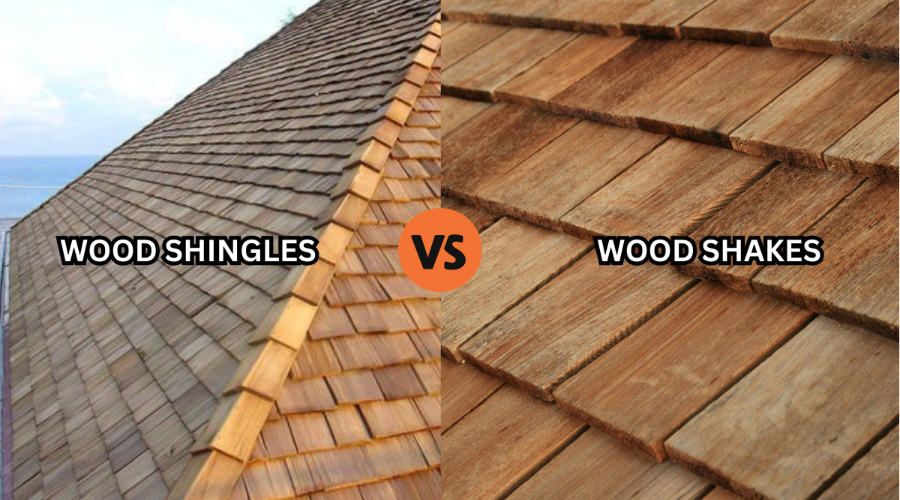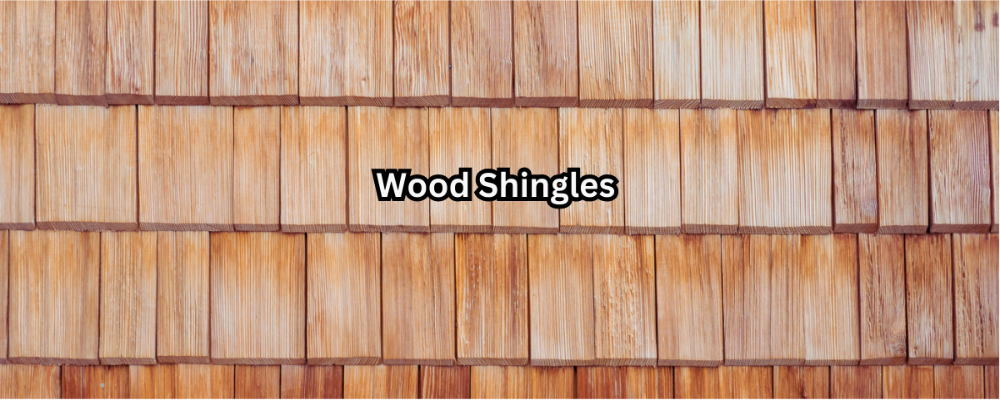In the field of construction, different kinds of roofing have been used worldwide since ancient times. Among them, wood shingles are one of the popular modern roofing materials, which can enhance and protect the structure with their long-lasting and sturdiness. Homeowners choose wood shingles due to their style and unique appearance. They provide wonderful outlooks and create comfortable and safe roofs for the residents. As they are made from nature, wood shingles are the best choice for wood lovers.
In this Brick & Bolt article, we will provide you with the types of wood shingles, their application, advantages, and other essential details to help you understand all about wood shingles and their purpose for constructing your dream home.
What Are Wood Shingles?
Wood shingles are a factory-cut roofing material used to construct the roofs of residential and historic buildings. They are a durable choice for your home. As they are sawn on both the top and bottom surfaces, they create a flat and smooth surface while being installed.
Types of Wood Shingles
Wood shingles come in various types, each offering unique benefits in durability, appearance, and resistance to weather conditions.
- Cedar Wood Shingles
Cedar is the best wood for their pleasant smell and sturdiness. Their natural qualities make them ideal for wood shingles, and these trees can grow up to 50 meters tall. Owing to their low weight, they resist shrinkage as well as any form of destruction. So, you have a good quality of roofing that tends to last 50 years, withstanding rough weather.
- Teak Wood Shingles
Teak wood shingles resist water, rot, fungi, and mildew, making them suitable for rainy areas. They have gold, copper, or silvery-grey colours and require minimal maintenance. Harvested in Asian forests, teak wood is applied in traditional as well as contemporary houses. They have a smooth texture and are simple to install on various types of roofs.
- Wallaba Wood Shingles
Wallaba shingles are reddish-brown and sourced from forests in South America. Because they include gum and natural oils, they are impervious to rust, termites, and rot. Due to their reliability, they are often utilised in wet and hurricane-prone regions and are a favourite among homeowners, hotels, and public buildings worldwide.
- Composite Wood Shingles
Composite wood shingles are factory-made and lighter than natural wood. They can withstand harsh weather conditions and are permitted in areas where building standards prohibit wood siding. They will not rot as time passes as real wood will. They are designed to appear like real shingles and maintain a uniform, long-term appearance with no maintenance.
Application of Wood Shingles
The natural beauty and strength of wood shingles have made them highly sought after for all types of construction.
Residential Roofs:
They give a classic and elegant look to a pre-existing property.
Historic Buildings:
They provide a reliable shield while helping to keep the older buildings in their traditional look.
Cottages:
They match perfectly with nature and provide a rustic look to cabins and holiday resorts.
Advantages of Wood Shingles
Several advantages of wood shingles are as follows:
- When compared to other roofing materials, wood shingles look unique and uniform with their careful installation process.
- You can recycle and reuse them instead of throwing them away, as they are made of wood.
- They can safeguard your house against heavy rainfall, dry weather, and other outdoor elements.
- These can save you time and effort through their easy repair and installation process. If they get damaged, it’s easy to replace them without much complication, saving you ideal time and effort.
Disadvantages of Wood Shingles
Wood shingles have several problems that need ongoing maintenance despite their stunning appearance. These are the reasons:
- When exposed to weather and sunshine, wood shingles become a dismal grey, losing their original appearance.
- Wood shingles may get cracked or bent (cupping) over time, leaving the roof open to severe winds.
- Wood has the property of expanding and contracting during heavy rainfall and hot summers. This causes fasteners and nails to come away from the shingles. So, safety protection for your roof may be reduced.
- In dark and wet places, fungus and bacteria reproduce faster, degrading the condition of the roof and causing the roof structure to deteriorate. Frequent washing and chemical treatment must be administered to clean them.
Installation Process of Wood Shingles
Follow the below steps to install wood shingles for your roof:
Step 1: Measure the Roof
Find the length and width of the roof and make sure to ready the materials required according to your calculations.
Step 2: Get All Ready and Start Installing
Begin at the bottom corner, placing the first shingle beyond the last rafter. Ensure it is straight and secure it with stainless steel nails.
Step 3: Overlap and Alignment
Install each shingle slightly over the one below it, leaving a 3mm gap for expansion. Overlapping prevents water leaks.
Step 4: Complete Both Sides
Work from the edges to the center, maintaining proper alignment.
Step 5: Final Work
Shorter shingles can be used for the final row, and a protective layer will be provided to cover the ridge to prevent leaks. At last, a durable, weather-resistant, and visually appealing wood shingle roof can be installed by following the above steps.
What’s the Difference Between a Wood Shingle and a Wood Shake Roof?

Several differences between a wood shingle and a wood shake roof are discussed in the table below.
| S.no | Feature | Wood Shingles | Wood Shakes |
| 1 | Manufacturing Process | Machine-sawn on both sides for a smooth finish. | Hand-split on one side and sawn on the other for a rougher look. |
| 2 | Thickness | Thinner at the butt end. | Thicker at the butt end for added durability. |
| 3 | Tapering | Uniformly tapered by sawing. | Not uniformly tapered, follows natural grain. |
| 4 | Appearance | Smooth, uniform, and polished look. | Rugged, rustic, and more natural-looking. |
| 5 | Texture | Flat and even surface. | Deep grain patterns, ridges, and grooves. |
| 6 | Best For | Modern roofs and exterior siding. | Traditional, rustic homes and lodges. |
| 7 | Durability | Less durable than shakes and requires maintenance. | More durable, especially against harsh weather. |
| 8 | Weather Resistance | Moderate protection against rain, wind, and sun. | Better protection due to thickness and rugged texture. |
| 9 | Cost | More affordable due to less material usage. | More expensive due to thickness and labour-intensive installation. |
| 10 | Installation Difficulty | Easier to install due to uniformity. | More challenging due to irregular shapes and thickness. |
Conclusion
In conclusion, wood shingles are a wonderful choice of roofing material for those who love wood products. These can make you feel more connected with nature and last up to 50 years, based on their quality and lifespan. If you maintain them well, they can extend their lifespan to nearly 60 to 70 years.
Homeowners have more choices to choose the right kind of wood shingles that suit their budget and design requirements. We at Brick & Bolt offer a wide range of applications, and you can call our expert team members to get an immediate quotation at any time.

